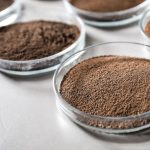SGS Seed & Crop News: March 2019
Canadian Seed & Crop eNewsletter Premier Edition:
Welcome to the premier edition of our Canadian Seed and Crop eNewsletter. We have combined our former SGS BioVIsion and Guelph Bulletin publications to bring you a single source of information. We trust that you will enjoy a more comprehensive look into SGS Canada’s business news across the seed and crop supply chain, along with industry news.
In this edition of Canadian Seed and Crop News, we will discuss:
- Importance of Seed Conformity Testing Prior to Seeding
- How Custom Seed Treating Services Give Rise to Value
- Geographic Driven Soil Nutrient Programs Launched in Canada
- Greenhouse Source Water Testing to Verify Nutrient Availability
- Seed Viability and End Use Testing Suited for Hemp Growers and Retailers
- Ask an Analyst: How to Sample for Greenhouse Water Analysis
IMPORTANCE OF SEED CONFORMITY TESTING PRIOR TO SEEDING
The 2018 seed crop exhibited regional challenges with dormancy, frost damage, seed borne disease, and high moisture content, which could lead to loss of seed quality through winter storage. Our seed labs usher standardized quantitative growth analysis for your business to build confidence that your seed products will perform to an elevated level during early seedling stages.
We can help ensure seed quality meets your standards through timely germination testing just prior to seeding. Also, we recommend ordering seed count measurements in tandem with germination testings, as this data contributes to your formula for targeted plant populations. Keep in mid that germination testing is a growth based diagnostic tool with a typical test window of 7-14 days, so do not delay in sample submission.
HOW CUSTOM SEED TREATING SERVICES GIVE RISE TO VALUE
Understand the key benefits of seed treatment, on your own seed sample, by ordering your comparative assessments for cereals and pulses. In the lab, we have built custom treating services on-site and have stocked our shelves with the most recently launched seed treatments, including nutrient enhancements. To evaluate the product’s effectiveness, we have capabilities to treat your seed and conduct quantitative comparison testing against the bare submitted sample. We advise the following tests: Germination, Cool Stress Test & Fungal Scan. stages.
GEOGRAPHIC DRIVEN SOIL NUTRIENT PROGRAMS LAUNCHED IN CANADA
SGS understands the regional soil types and input needs across Canada’s agricultural growing regions, so we have built soil nutrient packages for each segment as follows:
Western Canada: We have launched 3 comprehensive soil nutrient packages to meet both single and multi-depth requests, with the ability to add on soil pathology PCR detection analysis for clubroot and aphanomyces.
Eastern Canada: We have offered soil nutrient testing in Guelph for 35 years and continue to assist local growers with their specialized analytical needs.
GREENHOUSE SOURCE WATER TESTING TO VERIFY NUTRIENT AVAILABILITY
It is standard practice for test source water seasonally, especially in the spring as background nutrient levels and water chemistry can change throughout the year. Where water is naturally sourced, such as from lakes or ponds, the variability may be more dramatic. SGS offers a ‘Water Complete’ package, which should be utilized prior to mixing nutrient solutions for feed water. Our ‘Solution Complete’ package can be used to verify the concentrations of nutrient levels, or for re-mixing of recirculated drain water. astern Canada: We have offered soil nutrient testing in Guelph for 35 years and continue to assist local growers with their specialized analytical needs.
SEED VIABILITY AND END USE TESTING SUITABLE FOR HEMP GROWERS AND RETAILERS
Whether you are evaluating ability for hemp seeds to germinate, therefore producing healthy plants, or ensuring that seed viability meets end user requirements, SGS can help. In addition to our growth based tests, our CFIA accredited analysts will identify weed species and any other foreign material in your sample.
ASK AN ANALYST: HOW DO I PROPERLY COLLECT A GREENHOUSE WATER SAMPLE?
Always bear in mind that a test result is correlated to the quality of the sample that is submitted, and that any sample must be a good representation of the whole. For water samples form a tap, run the tap for one minute to ensure the sample water is characteristic of the source. For open areas, such as ponds or streams, multiple locations and depths should be subsampled. If only a singe ‘grab’ sample can be obtained, attempt to take the water from mid-depth. 300mls of water is an adequate sample size to submit. If testing for microbiologicals, such as salmonella, be sure to use the correct sample bottle that has a preservative, which can be sourced by contacting us. These bottles should not be used for nutrient analyses though.





